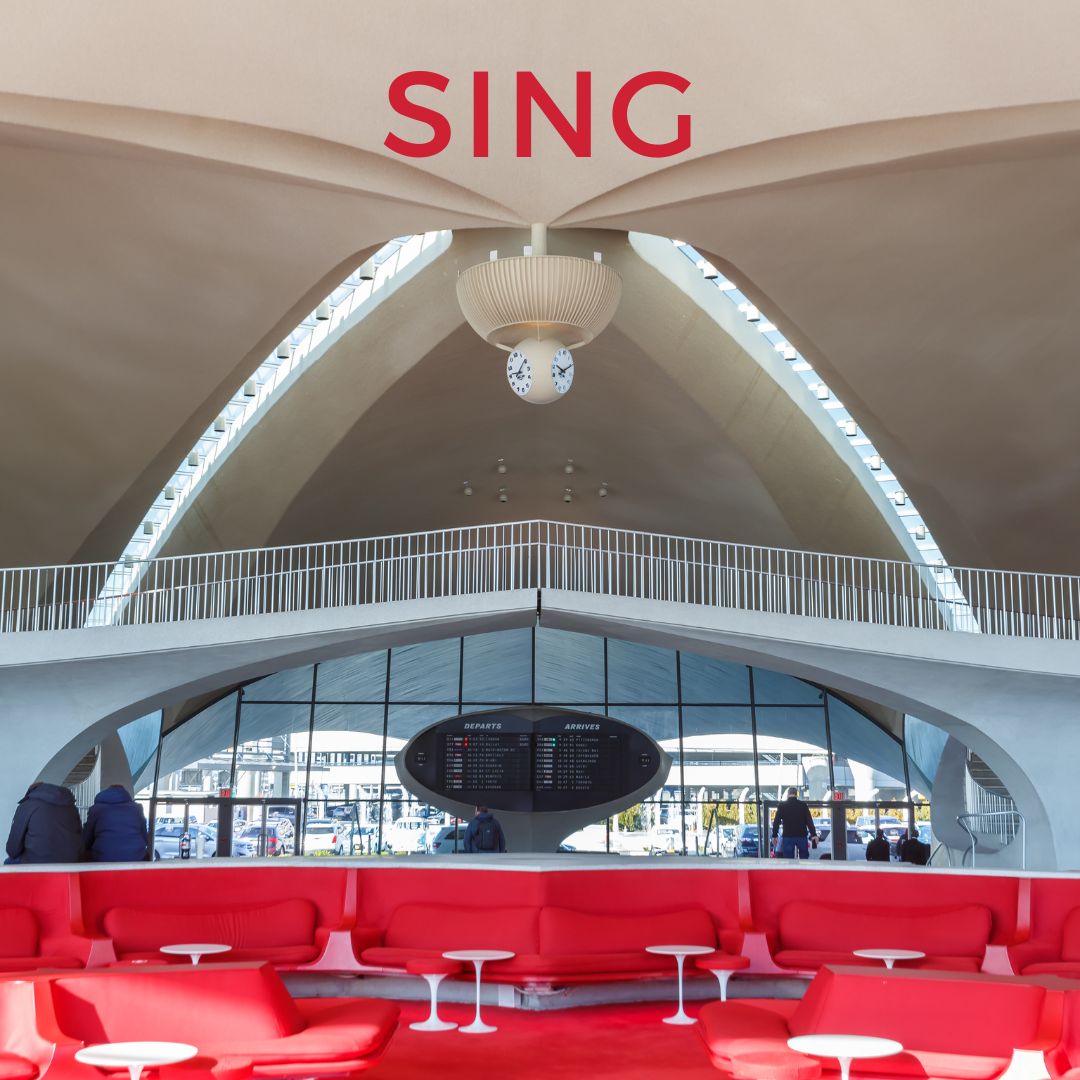
Once one embarks on a concept for a building, this concept has to be exaggerated, overstated, and repeated in every part of its interior so that wherever you are, inside and out, the building sings with the same message.
— Eero Saarinen
While Finnish-American architect Eero Saarinen’s most well-known work is certainly the iconic Gateway Arch in St. Louis, Missouri, his most inspired work is, just as surely, the Trans World Airlines Flight Center in New York.
Built in 1962, the TWA Flight Center served as the main passenger terminal at Idlewild (later renamed John F. Kennedy International) Airport up until 2001 when it was decommissioned. However, because the building was protected from demolition as a historic landmark, its owner—the Port Authority of New York and New Jersey—endeavored to redevelop the property, eventually finding a partner to turn it into a dazzling 512-room hotel that opened in 2019.
Having recently stayed at the hotel overnight, I’d ask you to picture a weary traveler arriving late in the evening, approaching a vast building adjacent to one of the world’s busiest airports. The structure of the hotel is dramatically lit, alabaster, glowing—its sweeping concrete roof contoured like emergent wings rising against a dark violet sky spangled with the navigation lights of approaching and departing inter-continental flights above. Closer now, through the hotel’s expansive window walls, the traveler’s tired eyes open a little wider at the sight of the striking red carpet blazing inside the building.
When you enter through the large sliding glass door at the front, the interior of the hotel—its style, its vibe, its atmosphere—tangibly expresses a new sort of hope, a plausible sense of optimism, all in just a single glance. The experience of entering the space becomes one of being transported into, immersed inside, an alternate reality—one grounded partly in the heady first days of the age of the jet engine and partly in an imagined brightly-lit future, one full of possibility. The dynamic centerpiece of the breathtaking entry foyer is a vintage, ever-clicking-ever-clacking airport arrival and departure board. To your right, elevated above the lobby is a striking and effortlessly cool restaurant. Eames-designed, Knoll-manufactured, mid-century modern furniture dots, at pleasing intervals, the wide-open space ahead just beyond an inviting check-in desk. The curved ceilings above, though surely engineered through precision mathematics, seem nevertheless to remain aloft via something akin to magic. A little further ahead, just beyond a sunken lounge area, is another wall of glass. On the other side of it outside, there’s a Lockheed Constellation, a first-generation passenger jet airliner, one developed over eighty years ago by TWA, its design overseen by the company’s mercurial owner and founder, Howard Hughes. This plane, called the Connie, parked on the tarmac outside, serves as one of the hotel’s cocktail bars.
Back in the lobby—above and to the left—there are a series of colorful and intriguing exhibits including one showcasing the history of fashion in the air travel industry from 1945 to 2001. A little more exploration of the hotel reveals a tubular pathway leading to an elevator, leading to an observation deck, leading to the hotel’s pool set three stories above one of JFK’s bustling runways. Strolling along further, there’s a compellingly-curated aviation history museum, a re-creation of Howard Hughes TWA office, and finally an area devoted to the building’s architect Eero Saarinen.
Along one wall of this dedicated space, written in a magnificently clean font—a typeface called Jet Age Gothic—these words appear: “Once one embarks on a concept for a building, this concept has to be exaggerated and overstated and repeated in every part of its interior so that wherever you are, inside and outside, the building sings with the same message.”
Like so many ideas that emerge from creative arenas such as architecture, art, fashion, and design, Saarinen’s words ring true not just in these specific domains but more generally. Moreover, this notion of singing out a single message with clarity resonates in the realm of the spirit, in the realm of our faith, as well. That is to say, perhaps if we want to concretize the beauty and the truth of God’s grace and love to all those we encounter, to all those within our ambit, to all those who cross our path in a way that is clearly heard, deeply felt, and memorably experienced, then it’s up to us to repeat the message and then to repeat again. For are we able to over-exaggerate God’s grace? Can we overstate God’s love and truth?
Transportively, immersively, let us try. Let us sing. Sing the same message inside and out.
God—May Your message sing in me. Amen.
— Greg Funderburk





